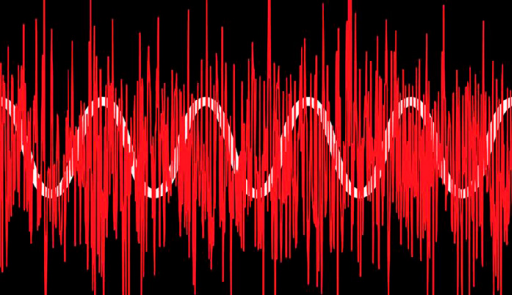Scientific breakthroughs often depend on discovering the meaning of seemingly random fluctuations.

In his essay "On Noise," the 19th-century German philosopher Arthur Schopenhauer wrote that "the most eminent intellects have always been strongly averse to any kind of disturbance, interruption and distraction, and above everything to that violent interruption which is causedby noise." He was referring to audible sounds, in particular the "infernal cracking of whips… which paralyzes the brain."
Scientists have a wider concept of noise, using the word to describe any kind of flfluctuation that has an element of randomness. Noise contrasts with signal, which is valuable because it conveys sought-after information. Separating interesting signals from obscuring noise is a big part of the art of experimental science and statistics.
Sometimes, however, the noise is the signal. Two of Einstein's three great discoveries in his "miracle year" of 1905 involved learning from noise. Very recently, creative work with noise has once again powered a series of breakthrough discoveries in basic physics.
Einstein traced the jitter of pollen grains, when immersed in flfluids and observed under a microscope, to their random encounters with individual flfluid molecules. This explanation enabled him to make a convincing case for the existence of molecules and to determine their masses. In his work on black body radiation, Einstein built on the work of Max Planck to show that graininess in the radiation's flflow means that light comes in lumps, or quanta. Today, we call the quanta of light photons.
In everyday life, we usually think of an electric current as a smooth flflow. In fact, the flflow involves lumps of charge-electrons, usually-leading to an irreducible graininess in the current, known as shot noise. Shot noise becomes particularly noticeable for weak currents, and its strength can be used to measure an electron’s charge. In 1995, scientists used shot noise to show that in certain states of matter the granules of charge carry only a fraction of the charge of an electron, verifying a startling prediction of Robert Laughlin and opening up a thriving new fifield of "sub-electronics."
Last month, the cover of Science announced that physicists had detected a new third kingdom of sub-electronic particle called anyons, which join the long-established bosons and fermions. Theorists have been looking forward to anyons for many years. (I named them in 1982.)
The crucial observations here concern a more sophisticated version of shot noise, whichin volves not merely flfluctuations in a single current but correlations between flfluctuations in two of them. The new research opens up new worlds of possibilities, including the construction of more effffective quantum computers.
Fluctuating currents and correlations among them might seem like pretty esoteric subjects, but they're a big part of the way we think, under the hood. Information in our brains is largely encoded in fifiring patterns of neurons, which are essentially spiky electric currents. Correlations among flfluctuations in the currents flflowing through difffferent neurons are the information-bearing patterns that embody perception and thought.
Of course, noise can be noisome. The jumbled activation of injured nerves is involved in the pain of wounds or inflflammation. Epilepsy is a mind-storm of noise, and as Schopenhauer wrote, "a great intellect has no more power than an ordinary one as soon as it is interrupted, disturbed, distracted or diverted." But when noise is mined and harnessed, it can be a valuable resource.

